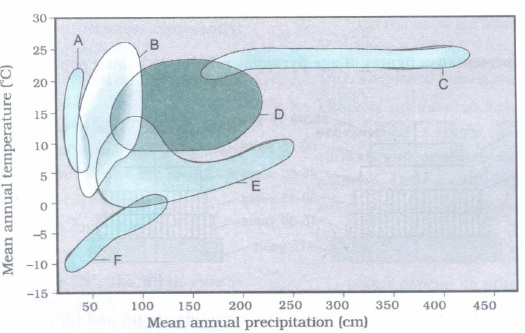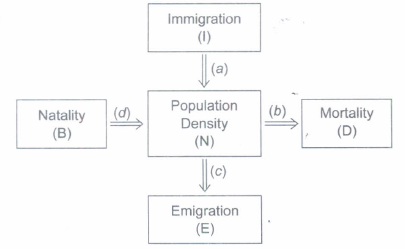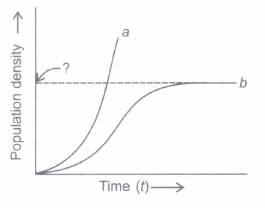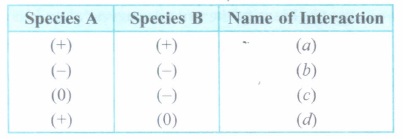CBSE 12th Standard Biology Subject Organisms and Populations Case Study Questions 2021
By QB365 on 21 May, 2021
QB365 Provides the updated CASE Study Questions for Class 12 Biology, and also provide the detail solution for each and every case study questions . Case study questions are latest updated question pattern from NCERT, QB365 will helps to get more marks in Exams
QB365 - Question Bank Software
CBSE 12th Standard Biology Subject Organisms and Populations Case Study Questions 2021
12th Standard CBSE
-
Reg.No. :
Biology
-
The graph given below shows the distribution of the major biomes of the world.

Answer the following questions based on the graph.
(a) Identify the biomes A, D, E, F.
(b) Which of the biomes shows the maximum range of
(i) Mean annual precipitation
(ii) Mean annual temperature?(a) -
Study the three representative figures of age pyramids relating to human population and answer the questions that follow:

(a) Wrrte'the names given to the three kinds of age pyramids, (I), (il) and (iil).
(b) Give reason for each, why you have named them so.(a) -

(I) Which of the above process(es) represent(s) an increase in population?
(ii) Which ofthe above process(es) represent(s) a decrease in population?
(iii) If a new habitat is just being colonised, out of the four process(es) affecting the population growth, which one contributes the most?(a) -

Study the population growth curves shown in the graph and answer the following questions.
(i) Identify the growth curves 'a' and 'b'.
(ii) Which one of them is considered more realistic and why?
(iii) What does the dotted line in the graph indicate?(a) -
Study the table given below and answer the questions that follow:

(+ = Beneficial interaction)
(- = Detrimental interaction)
(0 = Neutral interaction)
(i) Identify the type of interaction (a), (b), (c) and (d).
(ii) Why are predators 'prudent' in nature?(a)
Case Study Questions
*****************************************
CBSE 12th Standard Biology Subject Organisms and Populations Case Study Questions 2021 Answer Keys
-
(a) A ~ Desert,
D - Temperate forest
E - Coniferous forest
F - Arctic and Alpine tundra.
(b) (i) -Tropical forest
(ii) - Grassland. -
(a) (i) Expanding
(ii) Stable
(iii) Declining.
(b) (i) The number of individuals in the pre-reproductive age group is more than that in the reproductive age group.
(ii) The number of individuals in the pre-reproductive and reproductive age groups is almost same.
(iii) The number of individuals in the pre-reproductive age group is much less than that in the reproductive age group. -
(i) (a) - immigration and (d) natality.
(ii) (b) - Mortality and (c) emigration.
(iii) Immigration. -
(i) - 'a' is exponential growth curve.
- 'b' is logistic growth curve.
(ii) Logistic growth curve is more realistic because the resources are finite and will become limiting sooner or later.
(iii) The dotted line represents the carrying capacity. -
(i) (a) - Mutualism
(b) - Competition
(c) - Amensalism
(d) - Commensalism
(ii) If a predator is too efficient and overexploits its prey, then the prey might become extinct and following it, the predator may face extinction for lack of food; hence, predators are prudent in nature.
Case Study Questions






































